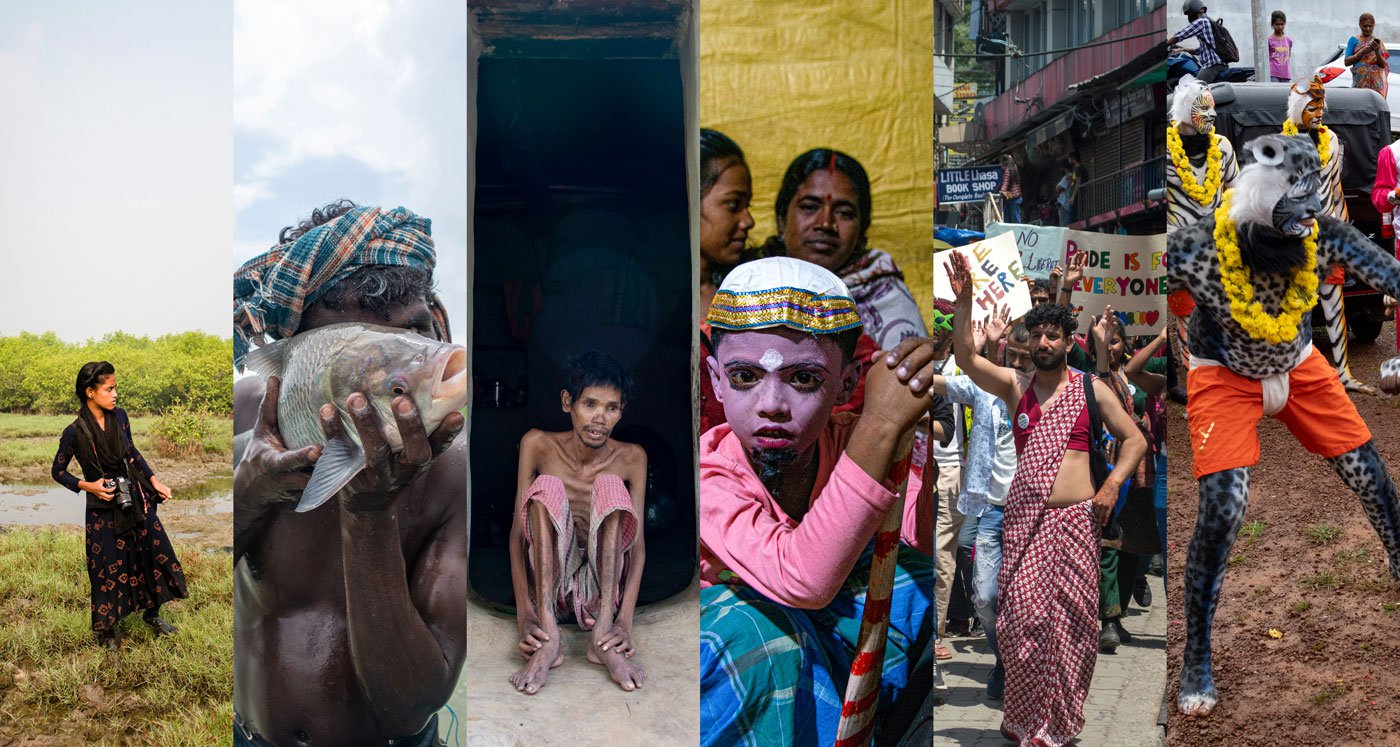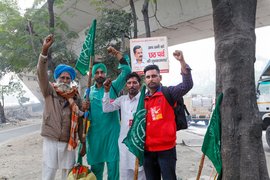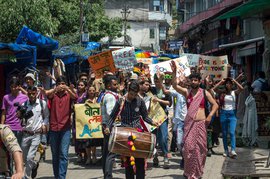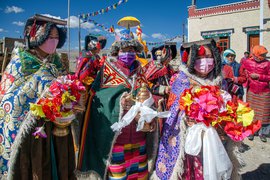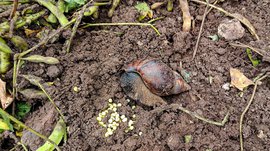Walk in the fields, or swim in the lake, watch the light slant across the skies and the colours change, keep your ears to the ground….listen. And hear people speak of their lives and loves, of joy and deep loss. Hold these emotions in a photograph, transport the reader back to the body of that place and the face of its people.
These six photo essays take you
into the heart of rural, urban and small town India. The images of a dying art
form and unending hunger in West Bengal, queer joy and resistance in Himachal
Pradesh
,
marginalised communities documenting their own experiences in
Tamil Nadu
and a folk dance with people somersaulting to drum beats in
coastal Karnataka
,
tell a myriad stories in a hugely diverse India – across landscapes, communities and
livelihoods.
The camera is a powerful tool, a source of self-reflection that is finally turned outwards, to capture injustice, and perhaps even be a path for its redressal.
The stories below will ignite a leap of the
heart or punch you in
the gut.
*****
‘My students tell their stories through photos’ by M. Palani Kumar
Holding a camera for the first time are children of sanitation workers, fisherwomen and others in classes and workshops by PARI photographer M. Palani Kumar, teacher with a camera.

'I wanted my students to tell their own little-known stories. In these workshops they are photographing things in their daily lives,' says Palani

Indira Gandhi (in focus) ready to pull the
prawn nets

Pandi, P. Indra's father was forced to take up sanitation work at 13 years as his parents couldn't afford to educate him – they were sanitation workers too. Workers like him suffer from skin diseases and other health issues due to the lack of proper gloves and boots
*****
'Fish turned me into a good photographer' by M. Palani Kumar
A PARI photographer writes about growing up in a community of skilled lake fishermen, and their daily lives.

When I got my camera, I also began taking photographs of fishermen – Pichai anna, Mokka anna, Karthik, Marudhu, Senthil Kalai (in the photo) – who threw their nets in the lakes

Fishermen
move around the big lake in Jawaharlalpuram in Madurai to increase the catch

Fishermen hauling nets out of water in the big lake in Jawaharlalpuram. Mokka (extreme left), says there are stones and thorns in the lake bed. 'If pricked by a thorn, we won't be able to even walk properly so we have to be very careful when throwing the nets'
*****
Hunger in the belly of the beast by Ritayan Mukherjee
On August 9, International Day of the World's Indigenous Peoples, a profile of the Sabar Adivasi community in West Bengal. Although denotified 70 years ago, they continue to face stigma, and struggle and starve, pushed to the margins. They are heavily dependent on shrinking forests for their food and livelihood.

With few earning opportunities, hunger is palpable among the Sabar community of West Medinipur and Jhargram districts

Kanak Kotal's hand has become permanently
deformed as she could not get medical help when she broke it. Her village,
Singdhui, has little access to doctors and healthcare

A child exhibiting symptoms of malnutrition
*****
Ma Bonbibi’s pala gaan under threat by Ritayan Mukherjee
Bonbibi pala gaan is among the many musical dramas performed by locals in the Sundarbans. Falling incomes have pushed many to migrate, leading to a dearth of artists to enact this folk theatre.

The green room, which is cordoned off from the street with curtains, is buzzing with audience and actors gearing up for the Bonbibi
pala gaan
, a musical drama

Artists begin the
pala gaan
with prayers
dedicated to Ma Bonbibi, Ma Manasa and Shib Thakur

Actors play out a fight scene between young Bonbibi and Narayani
*****
In Dharmshala: marching with pride by Sweta Daga
Himachal Pradesh's first Pride march advocated for the rights of the queer community, drawing many from villages and small towns in the state.

On April 30, 2023, Dharmshala (also spelt Dharamshala) town in the Dhauladhar range of the Himalayas woke up to its first Pride march

Anant Dayal, one of the organisers, holds a flag
symbolising trans rights

Manish Thapa (with the mike) makes a speech during the Pride march
*****
Pili vesha folk art: dancing to the beat by Nithesh Mattu
This vigorous folk dance is performed by young people in coastal Karnataka. Organised and funded locally, they are integral to festivities held around Dussehra and Janmashtami.

Pili vesha
is a folk dance performed during the festivals of Dussehra and Janmashtami

(Left to right) Nikhil, Krishna, Bhuvan Amin and Sagar Poojari wait for their turns as Jayakar Poojari paints tiger stripes on their bodies

Prajwal Acharya painted as a black tiger shows his stunt skills. The traditional steps in this dance routine have become acrobatic with more emphasis on stunts
*****
If the work we do interests you and you would like to contribute to PARI, please write to us at [email protected] . We welcome freelance and independent writers, reporters, photographers, film makers, translators, editors, illustrators, teachers and researchers to work with us.
PARI is a not-for-profit and we rely on donations from people who appreciate our multilingual online journal and archive. If you would like to donate to PARI please click on DONATE .
